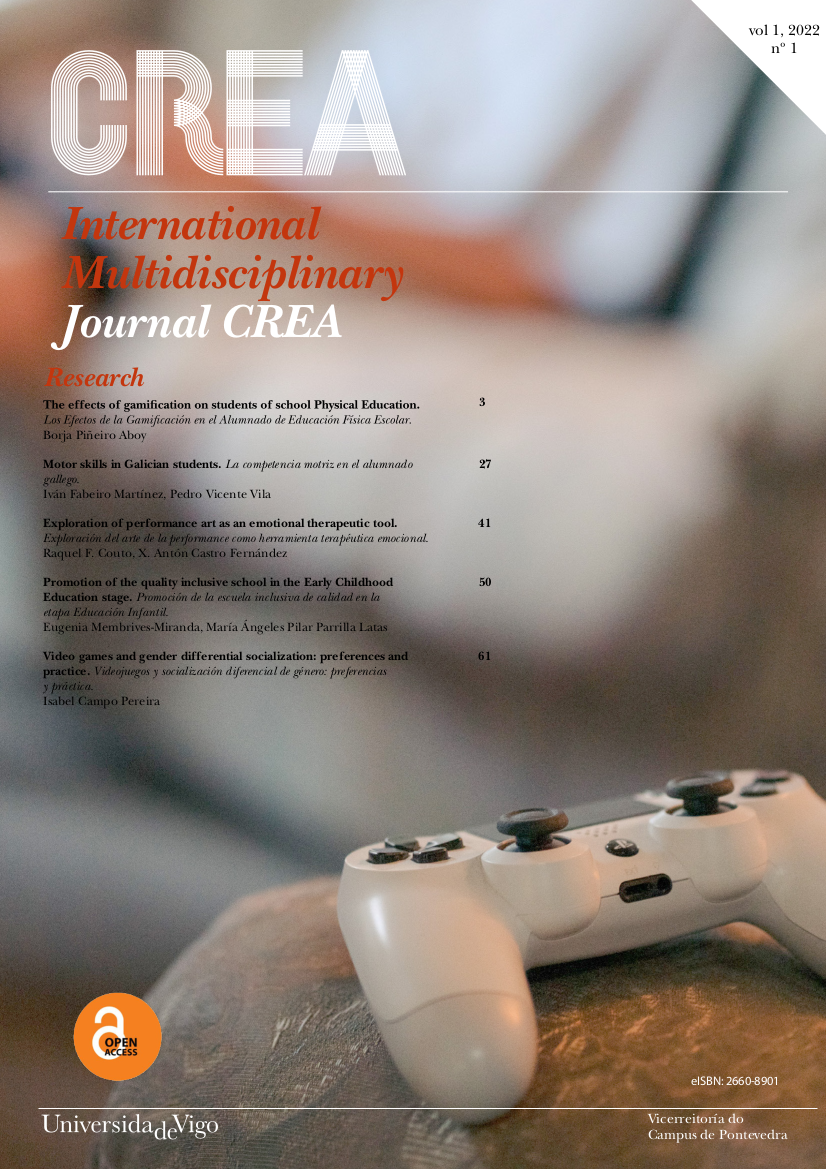The effects of gamification on students of school Physical Education
DOI:
https://doi.org/10.35869/ijmc.v2i1.3888Keywords:
Gamification, motivation, physical education, studentsAbstract
Objective: The overall objective was to identify and understand the concept of gamification and review the current context in which it appears. The specific objective was to determine and specify in the scientific production the effects of gamification on students, of school Physical Education (from 6 to 18 years old), which should be considered in the teaching intervention of this subject. Methodology: A bibliographic review was carried out in the following databases: Dialnet Plus, ERIC, PsycoINFO, PubMed, Scopus, Sport Discus, and Web of Science. In addition, the social network called ResearchGate was used. All those articles that dealt with the effects of gamification on students in the subject of school Physical Education (from 6 to 18 years old) published from 2015 to the present in Spanish, Portuguese and English were included. Results: Ten scientific articles were included. All of them were evaluated through the scal to Evaluate Scientific Articles in Social and Human Sciences (EACSH). The average scoere was 4.06, which means that the studies analyzed have a medium-high quality overall. We can deduce that more than half of the works are of a descriptive observational nature; half being deductive and quantitative, while the other half have deductive / inductive and mixed nuances (quantitative and qualitative). Conclusions: Gamification works as an exceptional tool to achieve so-called engagement. In addition, in the educational field, gamified interventions generate multiple benefits and improvements in students, mainly in their commitment, motivation and academic performance. In conclusion, we urge that teachers know this type of active methodologies to increase the involvement of students in the subject of Physical Education and the practice of daily physical activity.
Downloads
Downloads
Published
How to Cite
Issue
Section
License

This work is licensed under a Creative Commons Attribution-NonCommercial-NoDerivatives 4.0 International License.
Copyright
After the acceptance of an article, the authors will be asked to complete a Publication Agreement. Acceptance of the agreement will guarantee the widest possible dissemination of information. Under this agreement, the copyright will be transferred to the Company / Institution if the manuscript is accepted for publication. Permission from the Company / Institution is required for resale or distribution outside the institution and for all other derivative works, including compilations and translations. If extracts from other copyrighted works are included, the author (s) must obtain written permission from the owners of the copyright and credit rights of the source (s) in the article.
Rights of users
All the articles published in the magazine will be immediately and permanently accessible so that any user can read and download them. The (Re) use allowed for third parties of the published content will be defined by the following Creative Commons license: Creative Commons Attribution-Noncommercial-No Derivative Works (CC BY-NC-ND). For non-commercial purposes, allow others to distribute and copy the article. It also allows its inclusion in a collective work (such as an anthology), provided that the author (s) is cited and the article is not altered or modified.
Publication cost
The author of the accepted articles should not pay for its publication. The Society or the Institution that owns the journal finances the production costs of the manuscripts.








